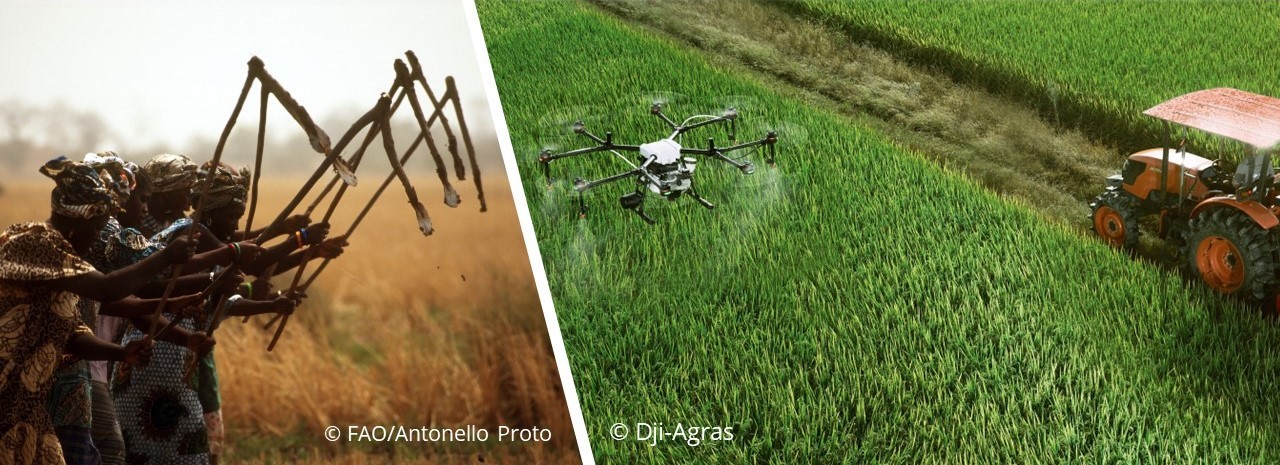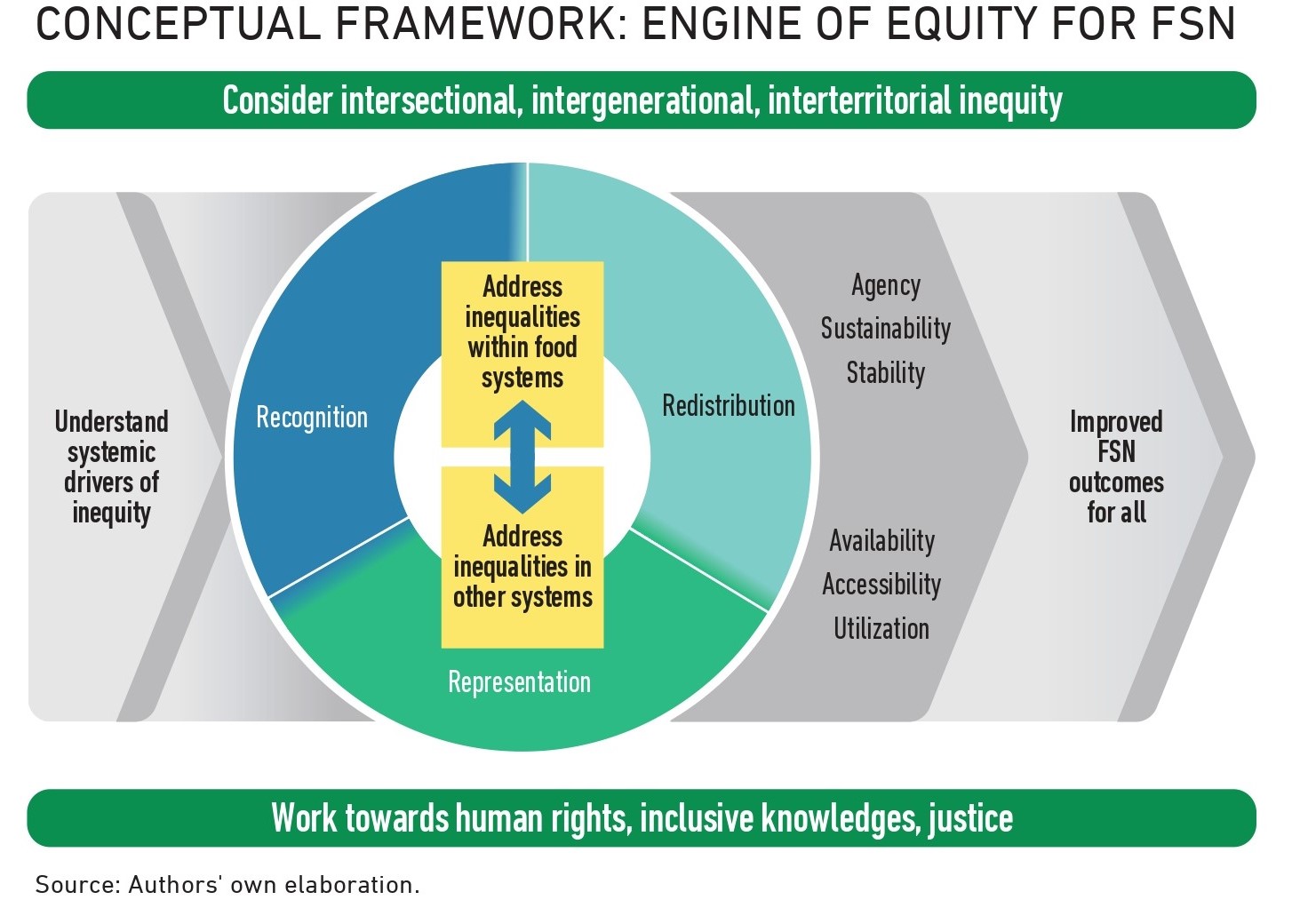
By Bhavani Shankar
The 2023 HLPE-FSN report on “Reducing Inequalities for Food Security and Nutrition” documents the numerous inequalities and injustices that pervade the food system and the ways in which they limit progress on food security and nutrition (FSN). The report’s conceptual framework (below) depicts how the objective of attaining FSN for all will require addressing inequalities both within and outside the food system. In turn, reducing these inequalities in a meaningful and long-lasting way requires that we grapple with the deep-rooted, systemic factors that underlie the inequalities and propagate them – aspects such as the climate crisis, social norms and the increasing concentration and consolidation of power in the global food system.

Many sources of inequality inhabit the food system, including well-analysed aspects such as size of operation (e.g. small versus large farms or retailers) and gender, as well as less well-addressed aspects such as indigeneity and disability. The bar at the top of the conceptual framework points to a set of aspects that are critical yet much less analysed or understood. Making substantive progress in reducing inequalities for FSN requires that we confront inequalities that span categories or identities (intersectional), time (intergenerational) and space (interterritorial).
Intersectional: Multiple sources of disadvantage (e.g. gender, indigeneity) often compound to create larger inequalities (e.g. the disadvantage in food access faced by indigenous women may need to be understood and addressed in its own right rather than either only through the prism of indigeneity or that of gender). The 2030 Agenda for Sustainable Development vows not just to ‘leave no one behind’, but furthermore to ‘reach the furthest behind first’. The furthest behind in the food system are frequently those that are buffeted by multiple sources of disadvantage combining and amplifying. In terms of action, we need much more research focused on intersectional issues in food systems and FSN, collecting and dissecting data to reveal layers of intersectional nuance. Policy and practice must then consider action strategies tailored to the most disadvantaged groups.
Intergenerational: Biological mechanisms of intergenerational transmission of nutrition outcomes such as height and weight are well-recognised. It is important also to understand how food insecurity and malnutrition can transmit across generations along socioeconomic inequality pathways. Inequalities in food systems and socioeconomic conditions transmit across generations in multiple ways (eg. through inheritance) and embed long-running deprivation, with implications for FSN across generations. ‘Intergenerational mobility’, or the ability of children to break free of the disadvantage faced by their parents has been shown to be more difficult in unequal societies. For example, a study* shows that in India where economic growth has brought with it increasing income inequality, intergenerational mobility has decreased over time. Farmers and agricultural workers, and the comparatively disadvantaged scheduled castes and tribes are found by the study to be particularly and increasingly immobile. This increases the likelihood that malnutrition inequalities along these dimensions will perpetuate or even widen across generations. The challenge is to take a long-run perspective in policy in an effort to "level-up" across generations, even though political incentives are loaded in favour of short-termism and maintenance of the status quo.
Interterritorial: Spatial/territorial inequalities abound in food systems and FSN, e.g. rural-urban and high-potential versus remote areas. While to some extent spatial inequalities such as those associated with remoteness may arise from unfavourable natural endowments (e.g. aridness or mountainous terrain), public investments seeking best returns often serve to widen such inequalities. Markets for nutrient-dense foods offer an example. Much policy attention on high-value nutritious foods such as vegetables focus on connecting farmers and moving produce out to distant markets offering lucrative prices and serving comparatively well-off consumers. While such schemes are often valuable from the farmer livelihood perspective, the absence of a strategy to invest in rural food markets and associated infrastructure may result in widening inequalities in consumption of nutritious foods. Considering policies and strategies in light of spatial interconnections can help avoid embedding unintended interterritorial inequalities.
Many of the most important inequalities in the food system straddle generations, territories and social identities. We must understand them better, and on the basis of such understanding, design appropriate policy and practice strategies to tackle them.
Bhavani Shankar, Professor in Food and Health, University of Sheffield, HLPE-FSN team leader, [email protected]; X: @Bhavani1Shankar
Referencing this report: HLPE. 2023. Reducing inequalities for food security and nutrition. Rome, CFS
HLPE-FSN.
*Reddy, A.B., 2015. Changes in intergenerational occupational mobility in India: Evidence from national sample surveys, 1983–2012. World Development, 76, pp.329-343.
The views and opinions expressed are those of the author and do not necessarily reflect those of CFS nor its HLPE-FSN.
The contribution of current donors of the HLPE-FSN - the European Union, the Swiss Confederation, the French Republic, the Principality of Monaco, and the Province of Quebec - is gratefully acknowledged.